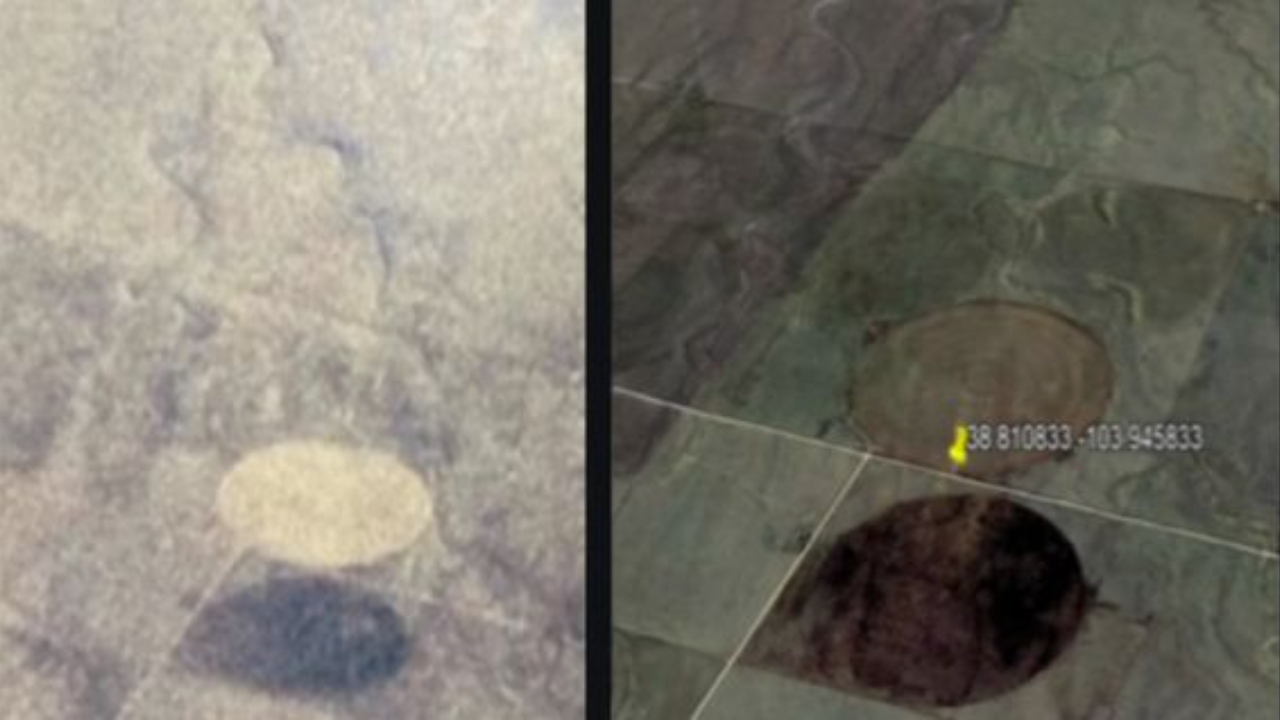Two Debunked Photos and a Damaged Reputation: Has Lue Elizondo Lost Public Trust?
May 02, 2025
Has Lue Elizondo's Credibility Taken a Hit After Recent UFO Photo Debunkings? Elizondo has long been considered a central figure in the modern push for UAP (Unidentified Aerial Phenomena) disclosure. As the former head of the Pentagon’s Advanced Aerospace Threat Identification Program (AATIP), his emergence into the public eye helped catapult the UFO topic from fringe interest to mainstream media coverage and congressional hearings. For many, Elizondo has been seen as a credible insider, someone leading the charge for truth and transparency on one of the most mysterious topics of our time. However, recent incidents have raised uncomfortable questions about whether Elizondo is as reliable as some had hoped.
At the recent "Understanding UAP: Science, National Security & Innovation" briefing, hosted by the UAP Disclosure Fund, Elizondo presented a photograph he described as showing a large, lenticular-shaped object, allegedly over 1,000 feet wide, taken by a commercial pilot flying at 21,000 feet over the Four Corners region in 2021. While he stopped short of calling it a UFO, the implication was clear: this was something unusual, worthy of congressional attention.
The image, however, was quickly debunked. Researchers determined the photo showed two adjacent circular crop fields, standard irrigation patterns commonly seen from the air. The illusion of a disc and its supposed shadow was simply a trick of perspective caused by the landscape, as highlighted by researchers who analysed the terrain patterns.
This wouldn’t be the first time Elizondo had shared questionable imagery. In a separate incident, he showcased a photo described as a possible “mothership” floating above Romania. That image was soon traced back to a Facebook post and identified as a reflection of a chandelier in a hotel window, not an alien craft. Elizondo later admitted the image came from a government contact and conceded he should have been more cautious, but the damage was done.
Beyond the photos, Elizondo’s claims in his memoir Imminent have likewise come under scrutiny. In the book, he discusses the alleged possession of non-human technology and biological specimens by the U.S. government. Yet these assertions are not backed by hard evidence and rely heavily on vague references to classified sources, making them impossible to verify.
Even within the UFO community, some have expressed frustration. Retired USAF Staff Sergeant Jeremy McGowan has publicly accused Elizondo of exaggerating or misrepresenting information, including presenting publicly available videos as if they were classified. Incidents like these have led to questions about whether Elizondo’s influence in the field is helping or hindering serious research.
To his credit, Elizondo has often framed his role as a messenger rather than an arbiter of truth. He’s frequently said he shares what others have passed on to him and encourages further investigation. But when the images he presents are repeatedly proven false or highly misleading, it undermines both his message and the credibility of the broader disclosure effort.
While Elizondo has played a vital role in bringing UAP discussions into the mainstream, recent events have sparked growing skepticism about his credibility. The recurrence of questionable visual evidence has raised concerns about the rigour of his vetting process and the broader impact on public trust in UAP research. Jeremy McGowan, a retired USAF Staff Sergeant and former collaborator with Elizondo, expressed his disillusionment, stating, “I witnessed him exaggerate or outright fabricate information that simply wasn't true.” McGowan recounted an incident where Elizondo presented a publicly available Soviet video as classified material, questioning the authenticity of his claims.
Furthermore, Elizondo's memoir, Imminent, has faced scrutiny for its extraordinary claims about non-human technology and biological specimens, which lack substantiating evidence. Critics argue that such assertions, without verifiable proof, risk discrediting the broader disclosure movement.
As the UAP community strives for legitimacy and scientific recognition, the importance of rigorous evidence and transparency cannot be overstated. Elizondo's recent missteps serve as a cautionary tale about the perils of sensationalism and the necessity for meticulous validation in the pursuit of understanding unexplained aerial phenomena.
Elizondo isn’t the only high-profile figure in the UFO disclosure movement facing scrutiny. Jeremy Corbell, known for promoting sensational footage with little verification, has also drawn criticism for prioritising exposure over evidence. Similarly, Ross Coulthart’s interviews and documentary claims, while compelling, have raised eyebrows due to a lack of corroborating details. Across the board, the credibility of some of the field’s most recognisable names is being questioned. That doesn’t mean the phenomena themselves aren’t real, but it does mean the people telling us about them need to be held to a higher standard. If the goal is serious, public-facing disclosure, it can’t be built on half-truths, hype, or wishful thinking. With trust and authenticity becoming increasingly rare among the movement’s most recognisable voices, perhaps it’s time for someone new—someone grounded in evidence and transparency, to lead the charge.
As someone who supports transparency and serious inquiry into the UAP phenomenon, I want to believe that figures like Lue Elizondo are acting in good faith. His efforts brought the topic out of the shadows and into public discourse, an achievement that shouldn't be overlooked. But belief must be grounded in accountability. If the movement for disclosure is to gain lasting credibility, it cannot afford repeated missteps, especially from those at the forefront. Presenting unverified photos, no matter how cautiously worded, risks undermining the very cause they aim to promote. Disclosure needs champions who value evidence over implication. It’s not about dismissing Elizondo entirely, it’s about holding all voices to a higher standard.
